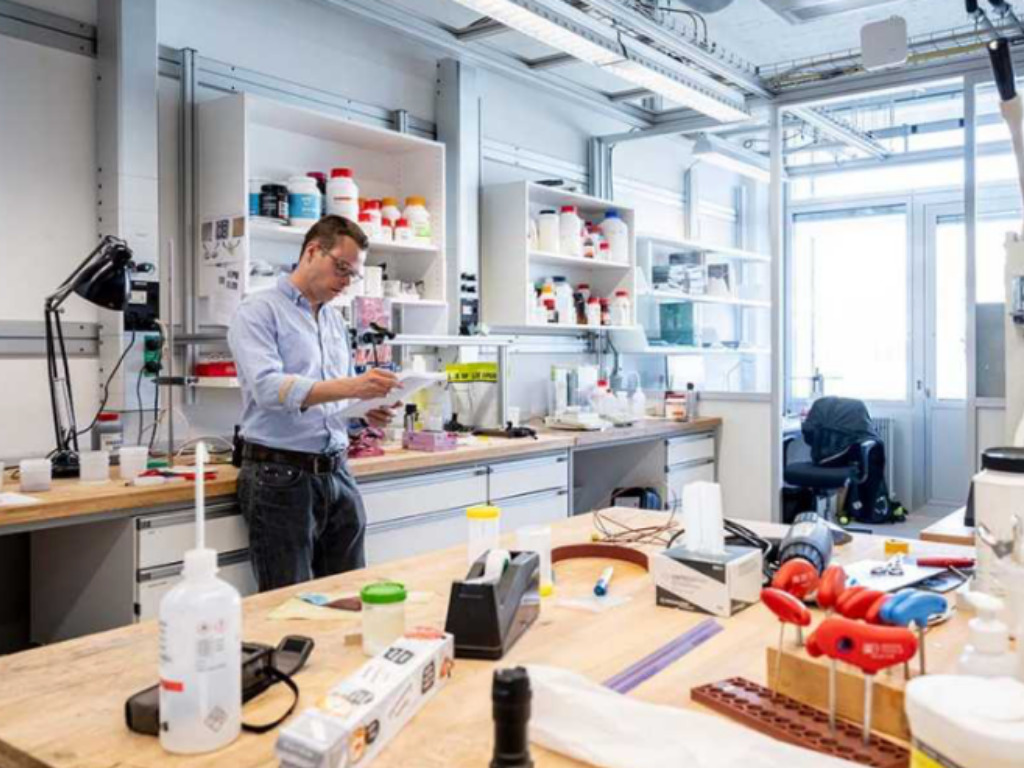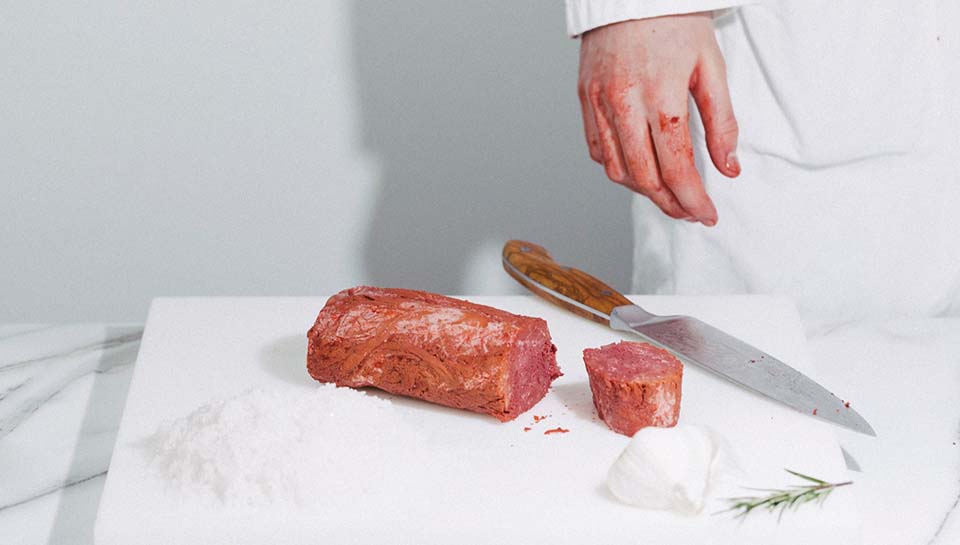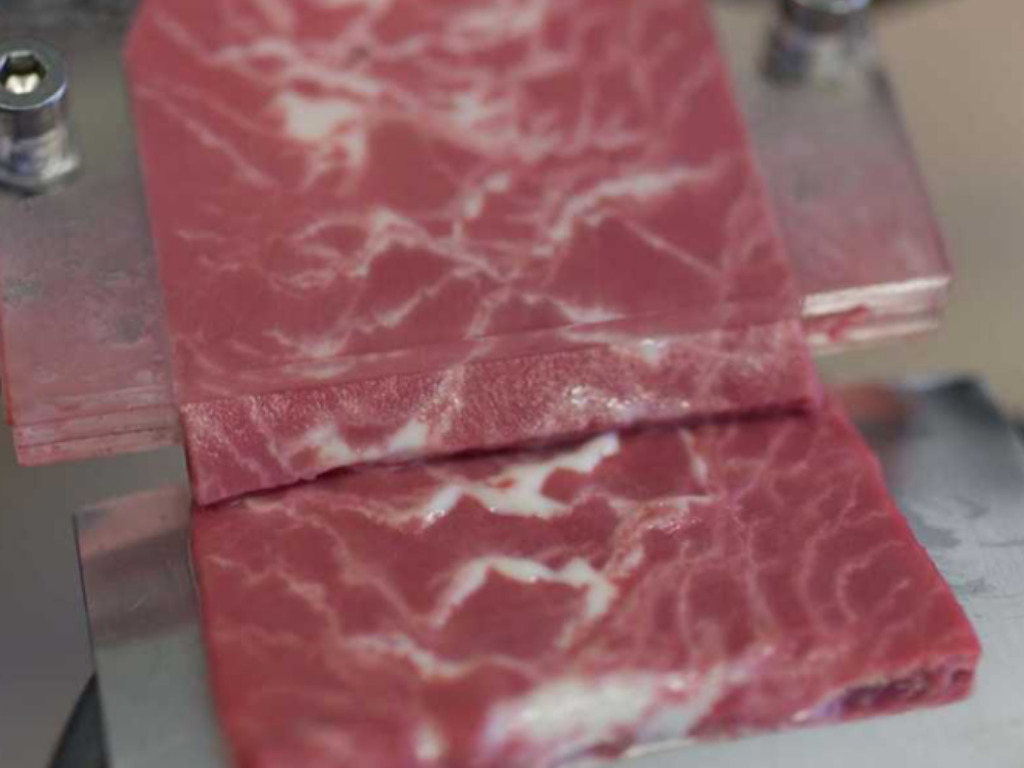Marbled Plant-Based Steaks That Aren’t 3D Printed? This Scientist Claims To Have Engineered Them
4 Mins Read
Martin Hofmann, an EPFL and ETH Zurich alumnus, is a material scientist preoccupied with flow properties. His research has led to him developing technology to create realistically marbled plant-based meat cuts. Combining fats and pea protein, he claims he has been able to manufacture innovative alternatives to high-end meat dishes, including steak. He has cited his potential primary audience as people like him: meat-eaters who would like to cut down on their intake.
Hofmann joined ETH Zurich for his doctorate, where he worked with Jan Vermant, professor of soft materials. His work involved studying the flow properties and mixing proclivities of emulsions. He would go on to prove that very thin layers of oil and water can be manipulated to create emulsions, as they interact with each other. This led to a eureka moment that the technique could be extended to plant materials, to replicate meat textures.

Replicating real beef
Hofmann has said that he took his time interrogating real beef to identify the properties that would need to be faithfully recreated in his plant-based alternative. He concluded that the rugged fibrosity and generous distribution of fat were the two main factors.
Using pea protein, Hofmann flavours it to taste akin to beef and processes it using biochemical engineering techniques to approach the right texture. He then takes the plant ‘dough’ and pushes it through a proprietary attachment, while other ingredients are added, including fat. Added as an emulsion, the oil quantity can be tweaked to ensure a tasty but healthier alternative to conventional beef. However, Hofmann has acknowledged that replicating marbling is not a simple task.
“You have to imitate something highly irregular,” Hofmann said in a statement. “Because when we look at one half of a steak, it tells us nothing about what the other half looks like.” He further explained that similarly random products are the only ones that can approach realistic substitution levels.

Mastering the plant-based meat marbling
Hofmann’s methodology sees him amalgamating pea protein and a tailored fat emulsion. He calls it “advective processing”, to differentiate from 3D printing techniques, which layer ‘threads’. Here, he forces the pea protein dough and fat into a special attachment that mixes the two indiscriminately and without pre-programmed patterns.
The equipment set-up is misleadingly simple. Two extrusion dies are used, one for the protein and the other for the fat. They feed into one extrusion attachment and the two are mixed using Hofmann’s own software program. The result is claimed to be a marbled plant-based meat cut that replicates the mouthfeel and flavour of real beef.
Hofmann has predicted that his technique will be market-ready within one year. It will be launched as a spin-off from the Pioneer fellowship he participates in. He does not want to go into business as a plant-based meat brand owner, seeing himself in a B2B facilitator role. His production technology will assist others in bringing more authentic products to market, in order to help “people to give up cheap, factory-farmed meat”.
Getting the texture of plant-based meat right
Vegan whole cut meats remain one of the holy grails of the sector. While some brands have nailed flavour, the race to see who can most accurately recreate the fibrous nature of animal meat is truly on.
Last month, Boston’s Tender Food scooped $12 million in a seed funding round to progress its whole cut plant-based meat developments. Backed by actor Natalie Portman, amongst others, the startup’s looking to hone and scale its production ahead of market launch. It’s taking an ambitious approach in seeking to be entirely indistinguishable from butchered meat. The company uses tech licensed by Harvard.
One company making demonstrable progress is Slovenia’s Juicy Marbles. The company has launched the world’s first vegan fillet mignon, which features random fat marbling to recreate the mouthfeel of thick-cut beef pieces. The result, as Green Queen discovered, is alarmingly realistic, leading to a positive yet negative review of the product.
Lead image by ETH Zurich.




